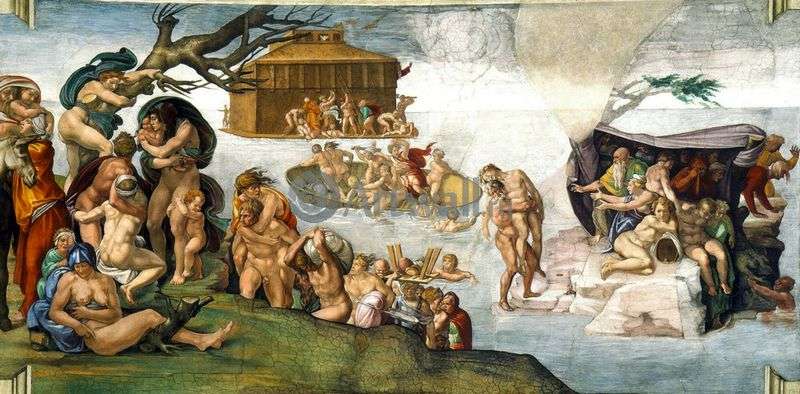
One of the central chapel frescoes tells of one of the most tragic events of the Old Testament. The inescapable and all-consuming element is a response to sins and aversion from God.
On the faces of people there is no horror, in them the apathetic consciousness of imminent death. In despair, mothers are trying to save children, adult children – old parents. At this last moment, people seemed to remember their special nature and divine essence.
Only three small areas remained uncovered: the top of the mountain, the roof of the marble palace, the top of the temple. Between these three islands, on which life is still warming, a boat filled with passengers rushes in pitiful agony. Someone is trying to cling to this unreliable support, someone already felt in relative safety.
Heaven is inexhaustible by moisture. Rainfall does not stop and soon there will not be a single island left on earth. But all attempts of people to survive do not look vain in this work. The viewer has the feeling that the human race will survive and not disappear.
Optimism against the background of the greatest tragedy is a sign of the overwhelming majority of the works of the High Renaissance. In this optimism there is a deep Faith in the divine nature of man, as well as in the Mercy of God and His Wisdom. The master could not allow even a shadow of gloom, despite the scale and inevitability of the Wrath of God.
It is known that this part of the painting together with the master was made by his students. This can be seen in the slight knockdown of the forms, the simplification of the figure and a certain schematization of the figures. But at the same time, the work was done in accordance with the exact sketch of the great master and the colors were selected under his leadership. To all we can add that the author himself has altered much in the work of his students. As always I did, not trusting my work to anyone. As for some vagueness and “downedness”, then, most likely, this is the result of later restoration work.
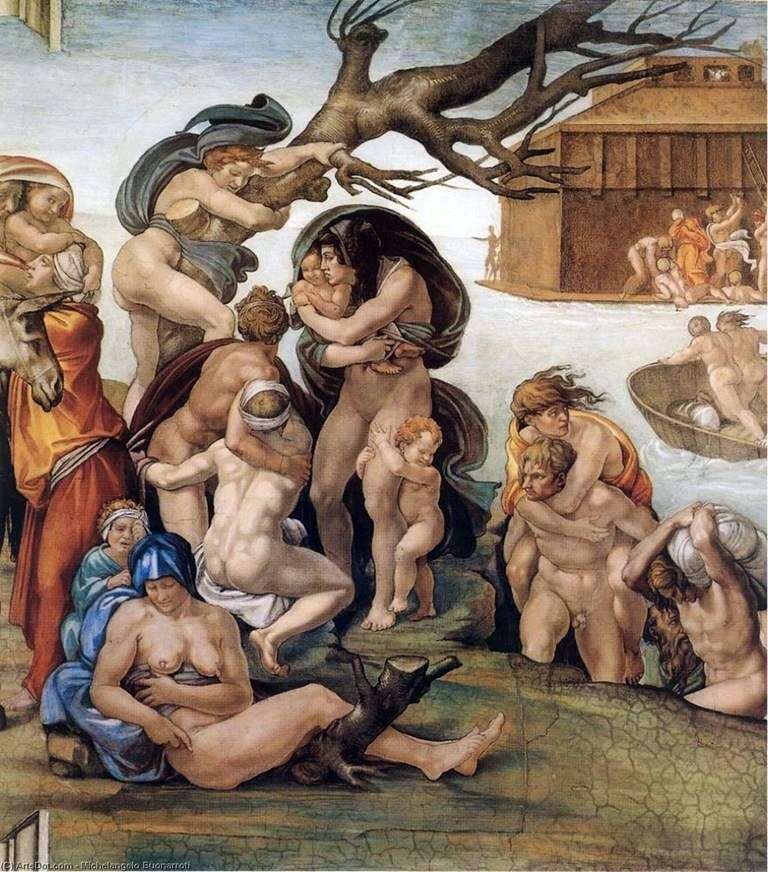 Flood, a fragment of the painting of the Sistine Chapel (fresco) by Michelangelo Buonarroti
Flood, a fragment of the painting of the Sistine Chapel (fresco) by Michelangelo Buonarroti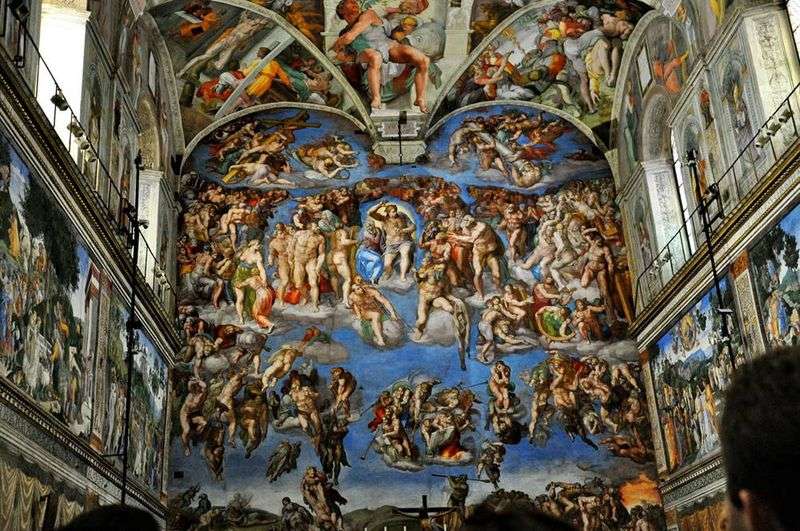 The Last Judgment by Michelangelo Buonarroti
The Last Judgment by Michelangelo Buonarroti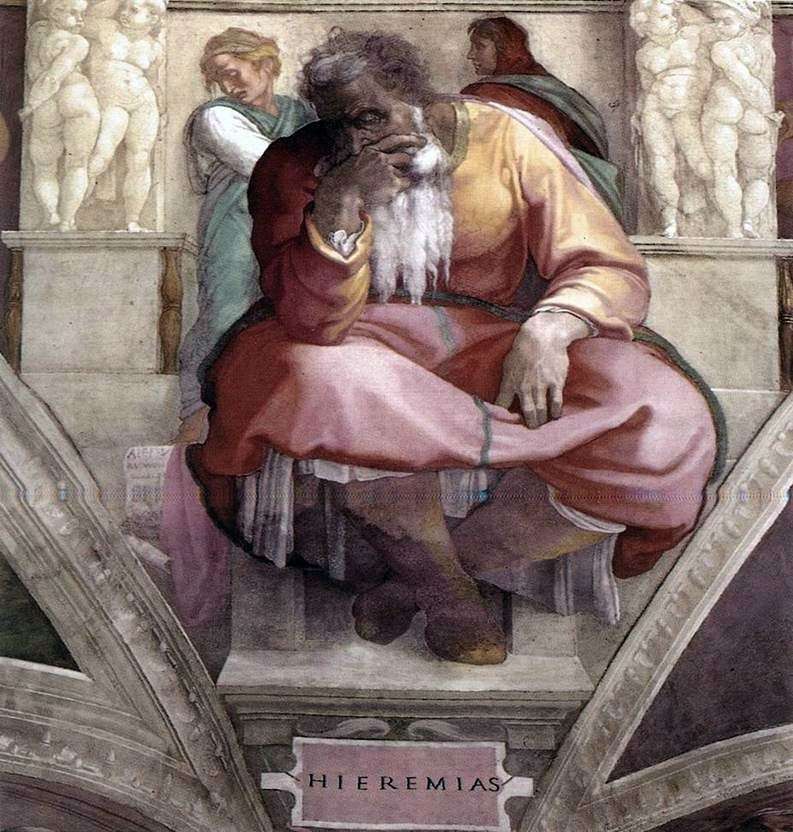 The Prophet Jeremiah (Fresco) by Michelangelo Buonarroti
The Prophet Jeremiah (Fresco) by Michelangelo Buonarroti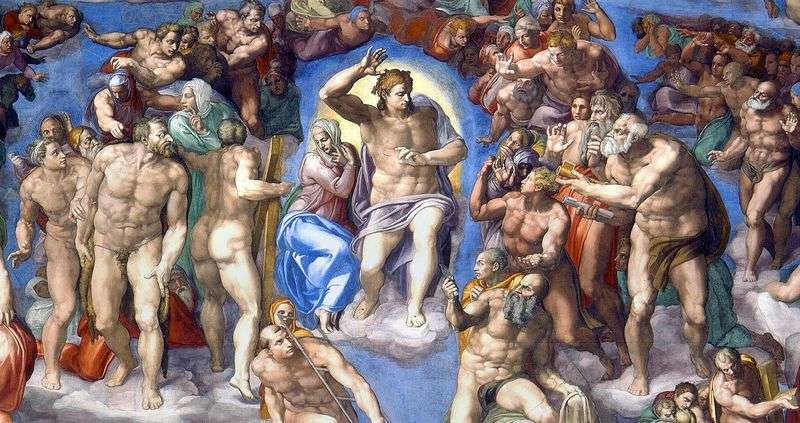 The image of Christ on the fresco The Last Judgment by Michelangelo Buonarroti
The image of Christ on the fresco The Last Judgment by Michelangelo Buonarroti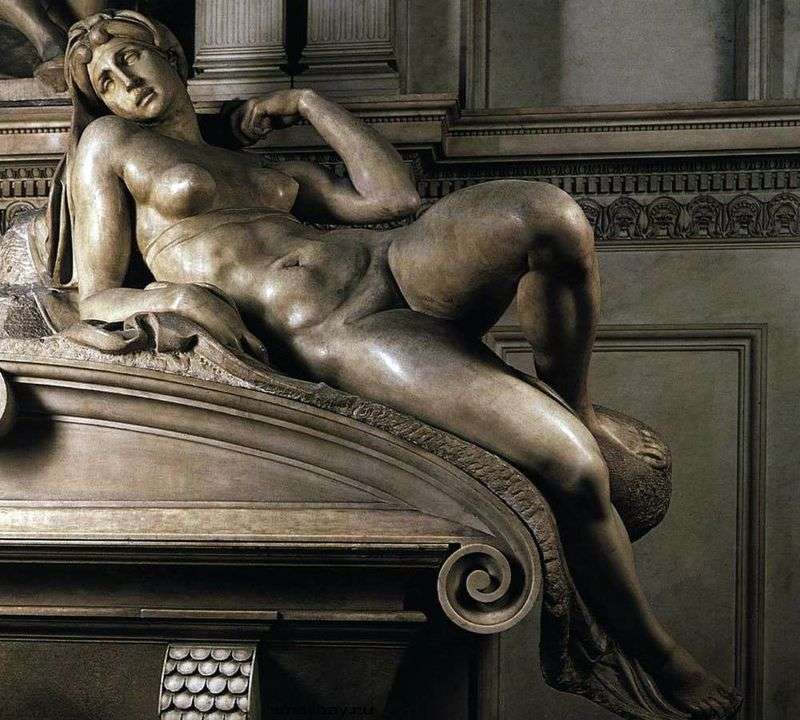 Morning (sculpture) by Michelangelo Buonarroti
Morning (sculpture) by Michelangelo Buonarroti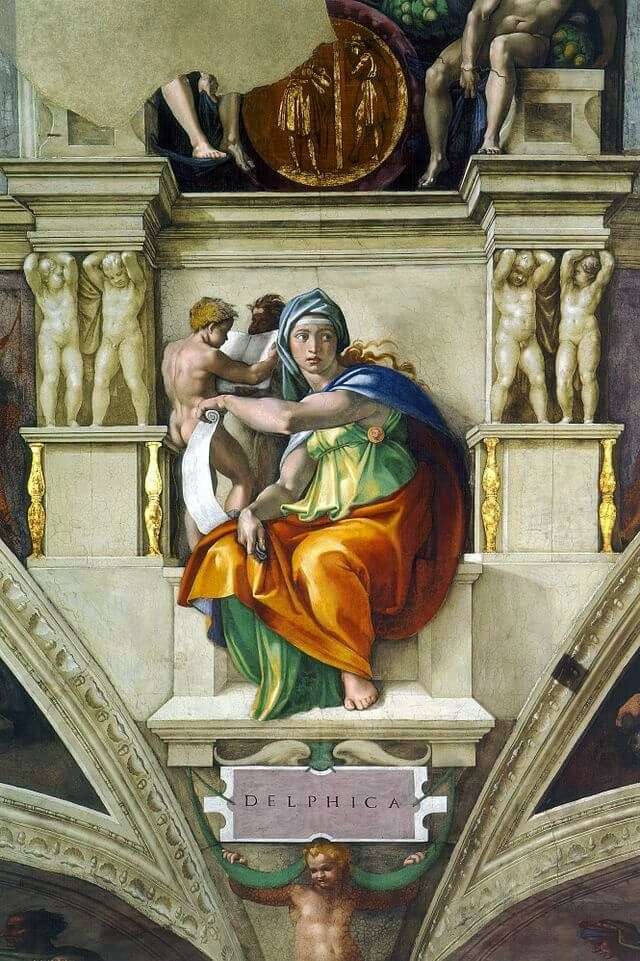 The Delphic Sibyl by Michelangelo Buonarroti Buonarroti
The Delphic Sibyl by Michelangelo Buonarroti Buonarroti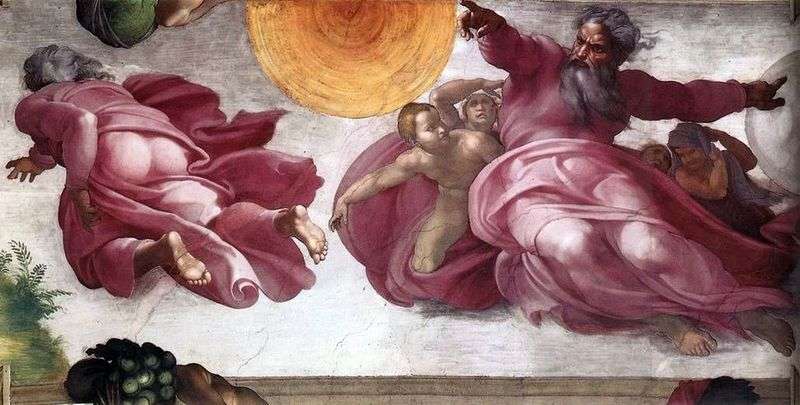 The Creation of the Luminaries and Plants by Michelangelo Buonarroti
The Creation of the Luminaries and Plants by Michelangelo Buonarroti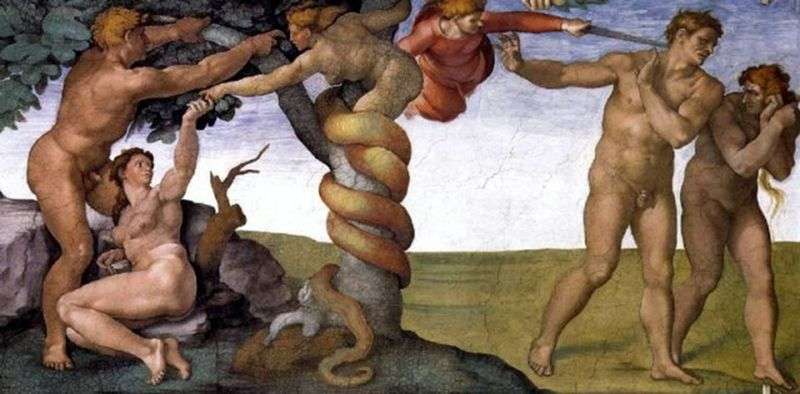 The Fall and Exile from Paradise by Michelangelo Buonarroti
The Fall and Exile from Paradise by Michelangelo Buonarroti